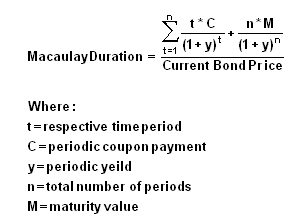Hi Difanchen,
Hope this helps:
1)Duration (Or Macaulay Duration)is the time in years it takes for an investment to recoup(Payback)It’s like you should be indifferent between
(i)Receiving Coupons and pricipal as and when due,and
(ii)Receiving all amount at once after the duration period,
after you have put in your money.Reinvestment is factored in.
2)Modified Duration is a linear measure of sensitivity of a fixed income prduct to interest rate changes.
Relates Yield change to price change.Ignores convexity.
Duration(Macaulay Duration) and Modified Duration are mathematically related:
Modified Duration=Duration/(1+Yield/m),Where m is coupon periods per year
3.Effective duration starts out with assumption that price changes are not the same when yield goes up vs when it goes down(Convexity).
So it tries to average out (change in Price when yield goes down-Change in Price when yield goes up)/2*Base Price*Change in yield
Note how the fact that price change is higher when yields fall(Positive Convexity)is accounted for.
How duration is calculated?
First, each of the future cash flows is discounted to its respective present value for each period. Since the coupons are paid out ,say,every six months, a single period is equal to six months and a bond with two years maturity will have four time periods.
Second, the present values of future cash flows are multiplied with their respective time periods (these are the weights). That is the PV of the first coupon is multiplied by 1, PV of second coupon by 2 and so on.
Third, the above weighted PVs of all cash flows is added and the sum is divided by the current price (total of the PVs in step 1) of the bond. The resultant value is the duration in no. of periods. Since one period equals to six months, to get the duration in no. of year, divide it by two.
highigher the coupon rate of a bond, the shorter the duration.
MaMathematically,
Ma 
